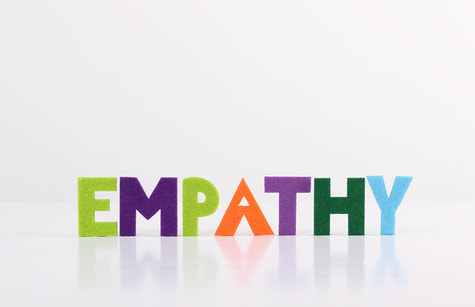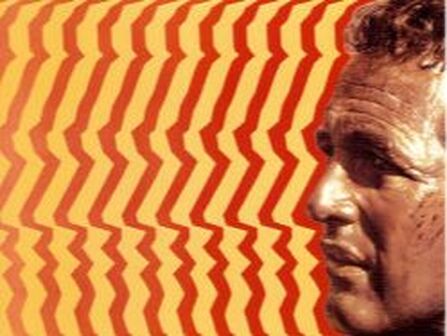|
To me as a yoga therapist, the most important part of my work is how I ask questions. Everyone has been to a medical or wellness provider-allopathic, holistic, whatever-that either doesn’t pay attention to your answers after a question has been posed or just doesn’t bother to ask you anything in the first place. Everyone hates that!
What does this all lead to? You not going back to that practitioner. You not following through with the recommendations, guidance, needed medical attention, etc. All of which is not in your best interest. …Because why bother! They don’t care. They didn’t hear a word I said. They just wanted my money. They are in cahoots with big pharma. ETC. ETC. We have all had this conversation in our minds. My goal as a yoga therapist is for my clients never to feel this way. I want them to feel heard. Truly listening and hearing someone=Empathy! Specifically in Yoga Therapy, we use the Panchamaya Kosha Model. The Panchamaya Kosha Model suggests that the human system is interconnected and functions optimally when there is a state of balance between the Koshas (layers). The five Koshas (layers) are physical, energy/breath, mental/emotional, wisdom/intuition and bliss layers. By applying this model, a yoga therapist can provide support for a client’s physical, emotional and mental well-being. I intentionally frame the conversation with my clients around the Koshas so that they feel heard, seen and partnered with.
Some Examples of my Questions: Annamaya (Physical) 1. On your intake, you mention tightness in your shoulders. Can you describe what you are feeling? 2. On a pain scale of 1-10, how are your knees feeling today? 3. Compared to the average day, is your pain better or worse (scale of 1-10) today? 4. Does the range of motion in your shoulder impact your daily activities? How? What are those limitations? 5. As a yogi, are there any asana(s) that cause you pain? What are those poses and where is the pain? 6. How does your arthritis affect your knees? Stiffness, range of motion limited, etc.? 7. Do you notice certain things trigger tightness in your shoulders and neck? Stress, overexertion, etc.? 8. Does your pain or discomfort prevent you from certain life activities? What kind? Do you use work arounds, just don’t do the activity, have someone else do it for you, etc.? 9. When you are standing in tree pose, do you notice anything about the posture? How does your standing leg feel? Your shoulders? Etc.? 10. When you are in plank pose, do you feel the muscle in your back activating? Where? Pranayama (Energy/Breath) 1. Where do you feel the breath? In your chest, ribs, abdomen, all? 2. How restful is your sleep? Do you wake throughout the night or sleep the entire time? 3. Do you feel rested when you wake up? All the time, sometimes, never. Does it affect the rest of the day? 4. Do you ever experience the afternoon slump? How often? What do you do to remedy it (such as coffee, etc.)? 5. How would you rate your stress levels (scale of 1-10)? 6. What causes you stress? What are your triggers? How does the stress make you feel (anxious, lethargic, etc.)? 7. Do you have any go-to activities for helping with stress? What are they? How often do you do them? 8. On the average, how would you describe your energy level? How does that compare to today’s energy level? 9. When you stated you had difficulty starting certain activities, can you describe to me what that means to you? 10. How would you describe the quality of your breathing? Manomaya (Mental/Emotional) 1. You mentioned poor concentration, how would you describe it? When does it occur? 2. When do you feel anxious? What are some of the things that create anxiety for you? 3. What does “overwhelm” feel like to you? Does it have a color, texture, etc.? 4. Where in your body do you experience anxiety? 5. In your intake you mention poor memory, how has that manifested in your daily activities? 6. When you have difficulty making decisions, how does that impact you? 7. How does stress manifest in your body or breath? Do you notice it in certain parts of the body? 8. What do you do to relive stress and anxiety? How often? 9. How do you show yourself self-compassion? What do you do to nurture emotional health? 10. How would you describe the quality of your support network? How satisfied are you with the quality of your relationships? Vijnanamaya (Wisdom/Intuition) 1. How would you describe your true nature? 2. How could you reframe stress to lessen its impact? 3. How could you transform anxiety so that it works for you? 4. How content are you? How could you cultivate contentment? 5. What are some tools you use to ground and center yourself? 6. How does reframing stress into something helpful look to you? 7. What brings you discontentment? Why? 8. If you stripped all the layers, what does your true nature “look” like? 9. How does contentment feel in your body? Texture, Sounds, Smells, Visuals, etc. 10. What tools could you utilize to bring the sense of contentment into your daily life? Anandamaya (Bliss) 1. What brings you joy? How? 2. Do you cultivate joy internally? How? 3. How do you cultivate overall well-being? 4. What inspires awe for you? Why? 5. What is an inner resource (memory, visualization, etc.) that connects you to your true nature? How does it appear to you? 6. What is your sankalpa (your intention or vow to yourself)? How can you manifest it in daily life? 7. Do you have a connection to something greater than yourself? How does that manifest in your life? 8. How do you relate to the word “hope”? What feelings does it create? 9. What does “connection” mean for you? 10. What gives you meaning? What questions would you ask? How would you feel if a practitioner framed the interaction in this manner?
0 Comments
As yoga instructors or yoga therapists, we often use Yoga Nidra or meditation “scripts”. And just like you, I too find some of the wording cumbersome and I stumble quite often over the language. There are certain scripts that resonant with me like those created by iRest experts but even those don’t roll off my tongue naturally. I like language that is clear and concise. Language that is easy to understand and that anyone participating in my classes can relate to and gain benefit. I steer away from loaded language and use more Western terminology in my group meditation and Yoga Nidra classes since some students are not coming to class for spiritual or philosophical reasons-they just might be trying to sleep better at night. A good way to find out how you sound reading one of these pre-written scripts is to record yourself. It will help you develop an authentic voice as a yoga instructor and/or therapist. You’ll instantly pick up on those parts of the language that sound “fake”. You know those parts..."like there is no way in the world I would normally talk like that." So what do I do? I change it up! Some Common Script Language and How I Change It
What are some ways you, as a yoga instructor, change language to be more authentic? As a student, what language have you heard an instructor use that sounded odd? Have you ever heard of Compassion Training? Compassion Training alters the activation of certain regions of the brain associated with emotional regulation. Studies suggest that compassion can be developed by activating the parts of the brain that cultivate understanding the suffering of others, utilize executive and emotional control, and engage in reward processing. Through these reciprocal connections in the brain, healthy and productive reactive responses to stimuli are created. Compassion Training creates more altruistic behavior-empathy What is Empathy? Empathy is defined as a phenomenon, which can only be understood within the dyadic relationship, an interactive experience or state of separateness and sharing. Empathy is the ability to recognize “the other” as similar to the self and makes possible the common experience of an action or emotion. Empathy serves as a healing force within relationships as it reduces aggression and antisocial behavior, and correlates to forgiveness. Ultimately, an empathic person creates a sense of safety. Safety is a prerequisite to establishing helpful strong social bonds. By being present-centered (using eye contact, softening your voice, having warmth in your voice, being emotionally attuned and using in-the-moment engagement) you enable people to shut down their defenses, which is itself healing. How can you use Compassion Training to cultivate more empathy towards others? Weng, H. Y., Fox, A. S., Shackman, A. J., Stodola, D. E., Caldwell, J. Z., Olson, M. C., Rogers, G. M., & Davidson, R. J. (2013). Compassion training alters altruism and neural responses to suffering. Psychological science, 24(7), 1171–1180. https://doi.org/10.1177/0956797612469537 Compassion=Concern for Others' Suffering Empathy=Feel What the Other Person is Experiencing Assertive Communication=Speaking Your Truth Through compassion, empathy, and assertive communication, you can cultivate loving-kindness. What is loving-kindness? You may have heard of Metta Meditations. Metta is Sanskrit for "loving-kindness". Loving-Kindness is friendliness, amity, and good-will. It is an active interest in others. Compassion for others infuses assertive communication with warmth and caring while empathy helps to understand an individual’s inner workings. These skills lead to interacting with loving-kindness regardless of your personal suffering and leads to wishing the other person wellness. This amazing combination (compassion, empathy and assertive communication) dissipates the feelings of ill-will that our brain can and does create. Which leads me to my husband. He is a fixer. A fixer of fixers. The Chief Fixer. A man who thinks he can fix any thing, any one, and any situation. And this is why I married him...I don't mean because he can fix my car or the heat pump or just about anything mechanical. I mean he is helper. He has this ginormous heart and goes out of his way to FIX all the wrongs of the world. He spends hours helping a local school (because the dads don't volunteer-we don't have any kids). He spends weekends rehabbing old cemeteries (the families have forgotten them-we don't know anyone buried in them). He just is a nice guy who wants to take care of everyone. He is the guy who will give you the shirt off his back-literally!! So...sometimes people manipulate that kindness. They know if they fain distress, he will come to the rescue, take over and fix everything. Those people don't have to be accountable for their own behavior...because they are users. We all know the type! Then... I get frustrated with the hubs because he takes on stress and responsibilities that are not his to take on. The very trait I love him for, pisses me off. ...which leads us to arguments. We have all been there, right? Here's what I try to do...it's hard and I don't always succeed but you might find these steps helpful for cultivating loving-kindness and communicating in a more healthy and helpful way: 1. Check in. For example:
3. Become aware of triggers for ill-will. Don't focus on potential harm to yourself or your family and don't exaggerate the events occurring. These steps enable me to communicate more openly, be less reactive, and be more supportive of my husband and his really big heart. How is this a yoga practice? Glad you asked! In the Yoga Sutras, the first two limbs of the Eightfold Path are the yama-s and niyama-s. Each contains 5 principles (10 in total) to follow on your path to enlightenment. Three of these are: Ahimsa=Non-harming.
What other yama-s and niyama-s can you think of? Try These Practices to Cultivate Loving-Kindness and Effective Communication:
Rosenberg, S. (Director). (1967). Cool Hand Luke [Film]. Jalem Productions. Hanson, R. (2009). Buddha’s Brain: The Practical Neuroscience of Happiness, Love and Wisdom. Oakland, CA: New Harbinger Publications, Inc. |
Kelley GallopI AM Boundless Bliss Yoga. Just me. I'm a one-lady band. I'm a yoga therapist. I didn't start out to be a yoga therapist, I just wanted to learn more and SHAAAZZAMM...here I am. Archives
September 2021
Categories
All
|










 RSS Feed
RSS Feed